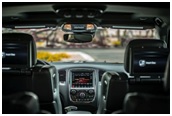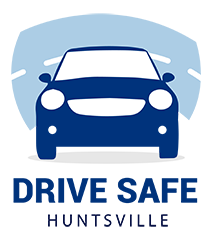Crash Avoidance

There will be times when your emergency is not on board. It directly involves other vehicles. If you drive over many years, you may encounter a time when you look up and a vehicle is heading straight at you. How could that ever happen? Sadly, you can probably make a list with very little thought. The other driver looks down and away from the road to compose an “important” text message. The other driver has had sudden medical episode and has lost consciousness or has fallen asleep. The other driver is passing another vehicle in their direction and did not allow enough time or space to execute the passing maneuver. Poor visibility caused the other driver to wander into your lane. Last but not least: YOU committed one of the actions you just read about.
Once you see a vehicle coming right at you, immediately sound your horn. Now is not the time for a friendly tap. Make it known that danger is approaching. If it’s dark out or in poor weather, flash your lights. This might be enough to get the attention of the other driver. You should also move right and slow down, again, being sure it is safe to move to the right. Never consider moving left. You may end up in the other driver’s lane. If they suddenly realize what’s happening, they may pull back into that lane and you now face a head on collision. If it becomes obvious that a crash is unavoidable, at least try to turn your vehicle to the right, enough so that the impact with the other vehicle will not be directly head on.
Some drivers, especially impatient ones, will try to pass you in two way traffic regardless of whether or not its legal. If they complete their pass, great! Drivers like that are dangerous. Don’t lose your cool. Just be thankful that they are creating more distance between them and you. If it becomes apparent that they will not complete their passing move and are stuck in a lane facing oncoming traffic, you need to act immediately. If the other driver has just about passed you but will not have time to get back in your lane, immediately let up on the gas. Apply your brakes if you have to. Just be sure nobody is following too closely behind you.
If the other driver just starts the passing move and you can see they will not come close to passing, immediately accelerate to make room for them to pull back in behind you. All you can do is to hope this careless driver learned a hard lesson. Be thankful you helped them avoid a crash. Remember, your vehicle might not be involved in the original crash, but at higher speeds, debris, including the two vehicles will rocket off in whatever direction the crash impact throws them. You could be in that path.

A more likely crash scenario is that you are sitting stopped at an intersection. Suddenly, you see in your rear view mirror that the driver behind you is not paying attention and it appears the other vehicle is about to rear end you. Whenever you are sitting stopped at an intersection, try to increase the cushion between you and the vehicle ahead. If it appears the driver behind you does not see you, the extra space you leave may allow you to pull forward enough until the careless driver sees you are stopped. If it becomes apparent that you are going to be struck, warn your passengers to brace themselves. Then, just before the moment of impact, release the brakes. This move may lessen the impact of the crash.
THE OFFICIAL NAME IS “HEAD RESTRAINTS” FOR A REASON.

One safety feature found in most vehicles that gets overlooked as a safety feature are head rests – more accurately – head restraints. These important devices are found in most vehicles, and sadly, many of them are removable. The purpose of the head rest is not for you to relax on a long drive or even catch a few winks. Head restraints, when properly adjusted, will prevent a serious head or neck injury to occupants of vehicles that are rear ended. They can make it a bit more difficult to look over your shoulder to check that your path is clear. With a bit of experience, though, you will not have trouble doing this. It is not worth the risk of removing head restraints just so you can see a bit better. Always adjust head restraints so that the top of your head is even with the top of the restraint. Try to have it set so that your head is as close to the restraint as possible.
